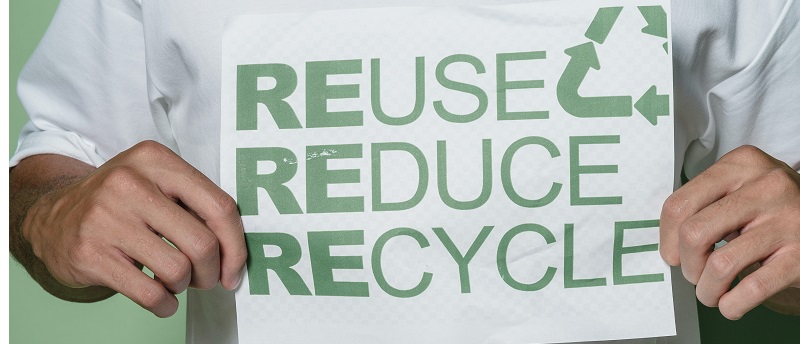105 Ways To Reduce Your Ecological Footprint
Have you ever thought about the impact your daily activities have on the environment?
Climate change and environmental degradation are real, and it’s our responsibility to do our part in reducing our ecological footprint.
As a homeowner, there are simple steps you can take to reduce your environmental impact.
In this blog post, we’ve put together some easy tips to help you reduce your ecological footprint.
These tips are not only good for the environment but will also help you save money on utility bills and other expenses.
5 Things You Can Do Today To Reduce Your Ecological Footprint

- Reduce Energy Consumption:
Turning off lights and unplugging electronics when not in use is an easy way to reduce your energy consumption.
You can also make a significant impact by checking for energy-efficient appliances when making purchases.
Look for the Energy Star label when buying appliances and electronics as they use less energy and can save you money on electricity bills.
- Use Water Wisely:
Water conservation is crucial for the environment. You can start by repairing leaks and using water-saving devices such as low-flow showerheads and faucets.
Taking shorter showers and installing a dual-flush toilet can also help reduce your water consumption.
- Reduce, Reuse, Recycle:
The three R’s – Reduce, Reuse, and Recycle – are essential in reducing waste and conserving natural resources. You can start by reducing your waste by purchasing products with minimal packaging.
Reuse items such as glass jars and plastic containers for storage. Make recycling a part of your everyday routine by separating recyclables from regular trash and taking them to a recycling center.
- Go Green in Your Yard:
Going green in your yard is not only good for the environment but also adds beauty to your home. Plant trees and shrubs for shade and insulation.
Use compost instead of chemical fertilizers and pesticides, and collect rainwater for watering your plants instead of using tap water.
- Use Sustainable Transportation:
Transportation is a significant contributor to carbon emissions.
You can help reduce your ecological footprint by using sustainable transportation options such as walking, cycling, taking public transport, and carpooling.
Reducing your ecological footprint doesn’t have to be complicated or expensive.
By making small changes to your daily routine, you can have a significant impact on the environment.
Use energy and water wisely, reduce waste, go green in your yard, and use sustainable transportation options.
These tips are easy to implement and can help you save money while making a positive impact on the environment.
100 Easy Ways To Reduce Your Ecological Footprint on a Budget

Reducing your ecological footprint doesn’t have to be expensive. There are numerous budget-friendly ways to make a positive impact on the environment.
Review this list of 100 easy and budget-friendly ways, you can significantly reduce your ecological footprint and contribute to a more sustainable future.
- Conserve energy by turning off lights, electronics, and appliances when not in use.
- Use energy-efficient LED light bulbs that last longer and consume less electricity.
- Unplug chargers and devices that are not in use to avoid phantom energy consumption.
- Optimize natural lighting by opening curtains and blinds during the day.
- Lower your thermostat during winter and raise it during summer to save on heating and cooling costs.
- Insulate your windows and doors to reduce drafts and energy loss.
- Use weatherstripping or door sweeps to seal gaps and prevent air leakage.
- Take shorter showers and consider installing a low-flow showerhead to reduce water usage.
- Fix leaky faucets promptly to avoid wasting water.
- Collect rainwater in a barrel and use it for watering plants and gardens.
- Use a programmable thermostat to regulate heating and cooling based on your schedule.
- Dry your laundry naturally by hanging them outside instead of using a dryer.
- Wash your clothes in cold water to save energy and preserve fabric quality.
- Limit water usage by installing low-flow faucets and toilets.
- Fix any plumbing leaks to prevent water waste and reduce water bills.
- Reduce food waste by planning meals, storing leftovers properly, and using a compost bin.
- Buy local and seasonal produce to support local farmers and reduce transportation emissions.
- Grow your own herbs, fruits, and vegetables in a small garden or containers.
- Purchase secondhand items such as clothing, furniture, and electronics to reduce waste.
- Repair and repurpose items instead of buying new ones.
- Use reusable shopping bags instead of single-use plastic bags.
- Bring your own reusable water bottle and coffee mug to avoid disposable cups.
- Use cloth napkins instead of paper napkins.
- Avoid purchasing single-use plastic water bottles and use a water filter instead.
- Pack a waste-free lunch using reusable containers and cutlery.
- Use eco-friendly cleaning products or make your own using simple ingredients like vinegar and baking soda.
- Buy in bulk to reduce packaging waste and save money in the long run.
- Avoid using disposable plates, cups, and utensils by opting for reusable options.
- Use rechargeable batteries instead of disposable ones.
- Recycle paper, plastic, glass, and metal items according to your local recycling guidelines.
- Reduce paper waste by using digital alternatives for bills, statements, and documents.
- Borrow books from the library instead of buying new ones.
- Use public transportation, carpool, bike, or walk instead of driving alone.
- Maintain your vehicle by keeping tires properly inflated and getting regular tune-ups for better fuel efficiency.
- Plan your errands efficiently to minimize driving distances and save on fuel.
- Explore car-sharing or ride-sharing services in your area.
- Support local farmers’ markets and buy directly from farmers for fresh and affordable produce.
- Cook at home more often to save money and reduce food packaging waste.
- Try meatless meals or incorporate more plant-based options into your diet.
- Reduce water usage by using a pressure cooker for faster cooking times.
- Use natural light and ventilation instead of relying on artificial lighting and air conditioning.
- Choose eco-friendly alternatives for personal care products such as bamboo toothbrushes and refillable shampoo bottles.
- Avoid fast fashion and invest in quality clothing items that will last longer
- Repair clothing and shoes instead of replacing them when they have minor damages.
- Buy secondhand clothing from thrift stores or online platforms.
- Donate or sell items you no longer need instead of throwing them away.
- Use a reusable menstrual cup or cloth pads instead of disposable feminine hygiene products.
- Choose eco-friendly and cruelty-free cosmetics and personal care products.
- Reduce water usage by taking shorter showers and turning off the tap while brushing your teeth.
- Opt for a reusable razor or electric shaver instead of disposable razors.
- Switch to eco-friendly laundry detergents and fabric softeners.
- Use a clothesline or drying rack to air dry your laundry instead of using a dryer.
- Practice mindful consumption by asking yourself if you really need an item before purchasing it.
- Reduce plastic waste by using reusable food storage containers and beeswax wraps.
- Use a refillable water filter pitcher instead of buying bottled water.
- Make your own natural cleaning products using ingredients like vinegar, lemon juice, and baking soda.
- Opt for natural and biodegradable alternatives to household items, such as bamboo toothbrushes and compostable garbage bags.
- Switch to digital subscriptions for magazines, newspapers, and books to reduce paper waste.
- Avoid excessive printing and opt for digital copies whenever possible.
- Reduce your reliance on air conditioning by using fans, opening windows for cross-ventilation, and wearing lightweight clothing.
- Install low-flow showerheads and faucet aerators to conserve water.
- Turn off the faucet while washing dishes or brushing your teeth.
- Use energy-efficient appliances and electronics that have high energy star ratings.
- Unplug electronic devices when not in use to avoid standby power consumption.
- Plant native trees and plants in your garden to support local ecosystems and reduce the need for excessive watering.
- Create a compost bin for food scraps and yard waste to divert them from the landfill.
- Use natural pest control methods in your garden instead of relying on chemical pesticides.
- Support local and sustainable businesses in your community.
- Reduce paper waste by using electronic tickets and receipts whenever possible.
- Practice mindful travel by opting for eco-friendly accommodations and transportation options.
- Offset your carbon footprint by investing in renewable energy projects or supporting carbon offset initiatives.
- Switch to rechargeable batteries for devices such as remote controls, toys, and portable electronics.
- Use eco-friendly alternatives for wrapping gifts, such as recycled paper, fabric, or reusable gift bags.
- Reduce food packaging waste by buying in bulk or choosing products with minimal packaging.
- Take advantage of natural ventilation by opening windows and using fans instead of relying on air conditioning.
- Support local recycling programs and encourage others to recycle properly.
- Reduce food waste by planning meals, making grocery lists, and using leftovers creatively.
- Minimize water waste by using a broom instead of a hose to clean outdoor spaces.
- Use eco-friendly and reusable alternatives to single-use plastic straws, such as stainless steel or bamboo straws.
- Opt for electronic statements and bills to reduce paper waste.
- Use energy-efficient curtains or blinds to regulate temperature and reduce reliance on heating or cooling.
- Use public water fountains or refill stations instead of buying bottled beverages.
- Choose furniture made from sustainable materials or opt for secondhand pieces.
- Support local initiatives for renewable energy and advocate for clean energy policies.
- Use public parks and green spaces for recreational activities instead of energy-intensive entertainment options.
- Participate in community clean-up events to reduce litter and promote a cleaner environment.
- Use eco-friendly alternatives for party decorations and tableware, such as reusable cloth tablecloths and biodegradable ones.
- Reduce plastic waste by using reusable shopping bags, produce bags, and bulk containers.
- Use a refillable water bottle instead of buying single-use plastic bottles.
- Opt for natural and non-toxic cleaning products to reduce harmful chemicals in your home.
- Choose energy-efficient appliances and electronics when replacing old ones.
- Repair or refurbish old furniture instead of buying new.
- Support local recycling initiatives and learn about proper recycling practices.
- Reduce food waste by freezing leftovers and using them for future meals.
- Use a bike or walk for short trips instead of using a car.
- Invest in energy-saving power strips to reduce standby power usage.
- Support eco-friendly transportation options such as electric vehicles or public transit.
- Participate in community gardening projects to promote sustainable food production.
- Use natural and eco-friendly alternatives to household cleaning supplies, such as vinegar, baking soda, and lemon juice.
- Spread awareness about the importance of reducing the ecological footprint and encourage others to take action.
Remember, even small actions can make a big difference when it comes to protecting our planet.


